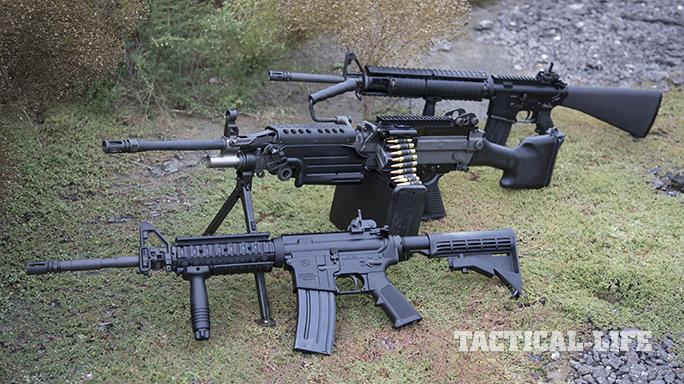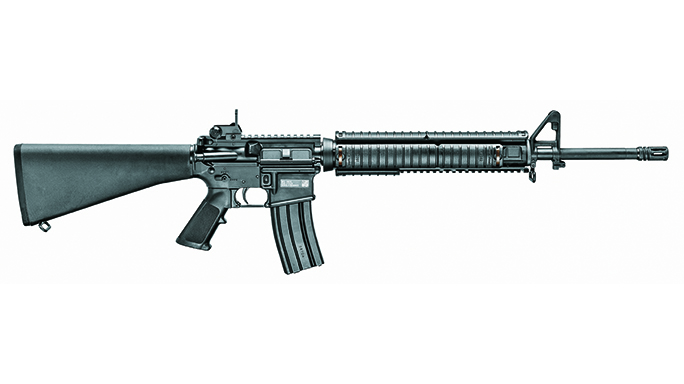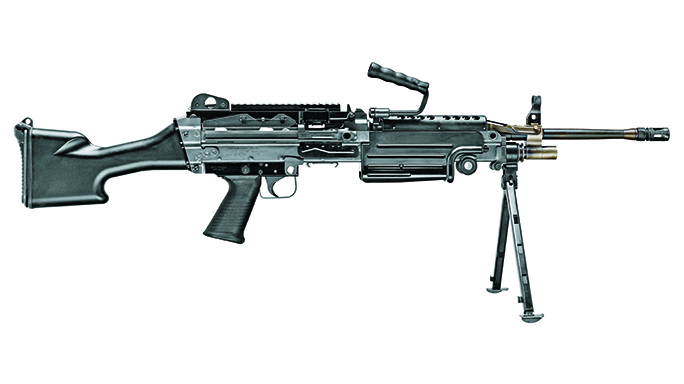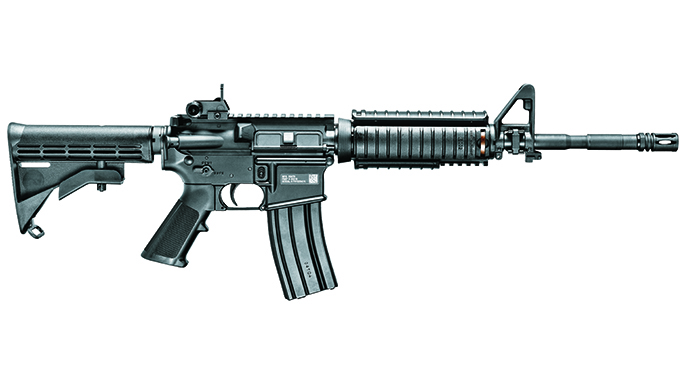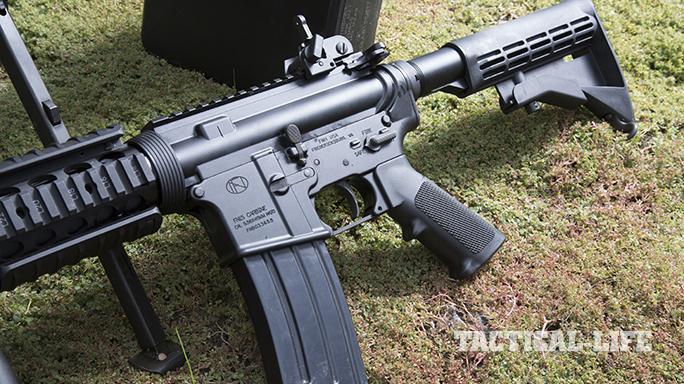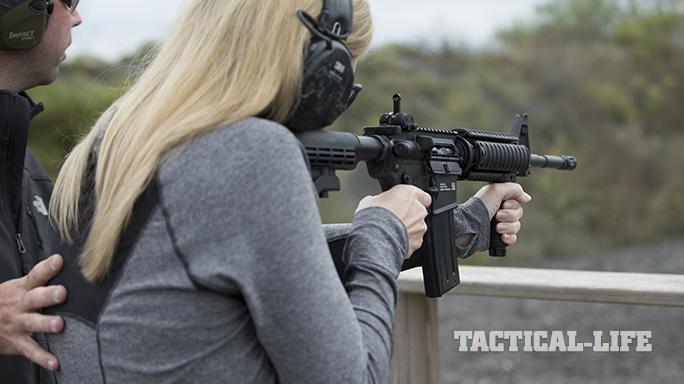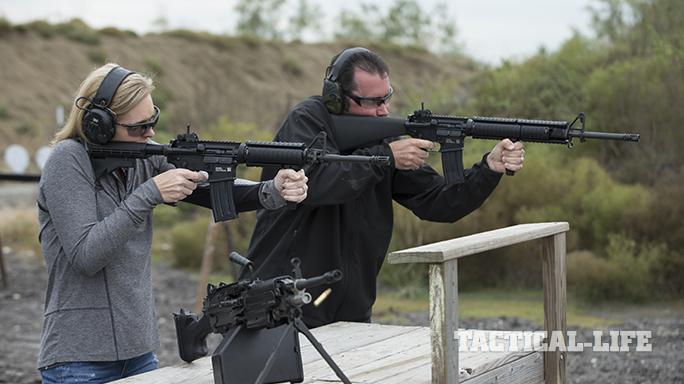Since the end of the Revolutionary War, American shooters, hunters and gun collectors have shown a propensity for our military’s standard-issue rifles. Part of this is because many thousands of them gained an intimate knowledge of these weapons while serving their country. Thus, it was only natural that when they returned to civilian life and needed a firearm for hunting, home defense or militia service, they chose one they were already familiar and comfortable with.
Then there was the economic aspect. Until the end of World War II, it was our government’s practice to sell off surplus military rifles in an attempt to reduce inventory, conserve storage space in arsenals and recoup some of the expenses of manufacturing them. So it was that Model 1795 and Model 1816 smoothbore, flintlock muskets were seen in the hands of frontier settlers, hunters and militiamen well into the 1860s. The Model 1841 percussion rifle-musket (aka the Mississippi Rifle) served with distinction in the Mexican-American War and was popular with discharged veterans, many of whom were early explorers of our Western frontier.
Surplus Sales
Advertisement — Continue Reading Below

After the Civil War, the civilian market was inundated with surplus Model 1861 rifled muskets that were snatched up at bargain prices by cost-conscious farmers and the thousands of new settlers heading west. Many veterans of our fratricidal conflict became familiar with the new metallic-cartridge-firing rifles, and surplus Spencer carbines and rifles, along with Springfield Model 1865 and 1870 “Trapdoor” rifles left over from U.S. military trials, found a ready market.
When the Army replaced the Springfield Model 1873 with the new small-bore, smokeless-powder Krag-Jørgensen rifle in 1894, the .45-70 Trapdoor could be bought for a few dollars from mail-order dealers. When they were replaced by the Springfield Model 1903, surplus Krags could be bought for less than $5, and thousands were used by hunters looking for a bargain rifle.
- RELATED STORY: FN Sentinels – 8 Battle-Proven ARs From FNH USA
The story repeated itself after World War I when the government disposed of excess M1903 and M1917 Enfield rifles, thousands of which were sporterized to make them more suitable for hunting. The post-1945 years saw additional M1903 and M1903A3 rifles sold off, followed shortly afterwards by M1 Garands and M1 Carbines, which could be purchased from surplus dealers or through the Director of Civilian Marksmanship Program (DCM) at cut-rate prices. In fact, my older brother bought a mint-condition M1 Carbine from the DCM in 1966 for the princely sum of $20.
Advertisement — Continue Reading Below
This largess came to an end in the when the armed forces began adopting select-fire rifles and increasing anti-gun legislation discouraged the government from disposing of surplus military firearms to civilians.
While these actions increased the prices of those rifles already on the market, it had the secondary effect of encouraging entrepreneurs to begin producing semi-auto reproductions of M1 Garands, M1 Carbines and M14 rifles using a combination of surplus and newly made parts. When the M16A1 rifle was adopted, its civilian-legal version, the AR-15, quickly became the hottest item on the semi-auto rifle market, a position it continues to hold to this day.
Battlefield Icons
Advertisement — Continue Reading Below

One of the newest entrants into this burgeoning civilian market is FN, a global leader in the development and manufacture of high-quality, reliable firearms for military, law enforcement and commercial customers worldwide. The company’s American headquarters are in McLean, Virgina, with manufacturing operations in Columbia, South Carolina.
FN has been manufacturing the M249 squad automatic weapon (SAW) for the U.S. armed forces since the early 1980s, and in 1988 it received a contract to produce the M16A2 rifle for the Army and Marine Corps. In 2012, it also received a contract for M4A1 carbines. With the seemingly insatiable current market for AR-15/M4-type rifles, it only made sense for FN to enter the booming civilian market. In November of 2015, the FN Military Collector series launched, a product line that features commercial variants of its iconic military designs.
The initial products in the FN Military Collector series are the M4 and M16, which are civilian versions of the U.S. armed forces’ currently issued M4A1 carbine and M16A4 rifle. The series also includes the semi-automatic M249S, a civilian-legal replica of the full-auto M249.
Advertisement — Continue Reading Below

All three weapons are chambered for the 5.56mm NATO cartridge and feature 7075-T6 aluminum alloy receivers and polymer furniture. The M4 and M16 will accept all commercially available 10-, 20- and 30-round magazines and many accessories, while the M249S can use 20- and 30-round magazines or M27 linked belts.
- RELATED STORY: SLP Competition – FN America’s 12-Gauge Range Master
The M4 and M16 both feature receivers with full-length Picatinny rails, Knight’s Armament M5 RAS handguards, ambidextrous safety levers, forward assists, ergonomic magazine releases, A2-style front sights, flip-up rear sights, spring-loaded ejection port covers and bayonet lugs. They each come with an aluminum, 30-round magazine. The M16 has a fixed buttstock while the M4’s is collapsible. In addition, the M4’s A2-style compensator is pinned and welded to the barrel for a 16-inch overall length.
According to Mark Cherpes, the president and CEO of FN America, “This new line of products allows us to showcase FN’s battle-proven legacy of producing firearms for militaries worldwide and passing this technology on to our commercial customers. We’re excited to bring these semi-automatic versions of the world’s most iconic products to America’s gun owners.”
Advertisement — Continue Reading Below
For more information, visit fnamerica.com or call 855-536-4872.
This article was originally published in ‘Military Surplus’ #188. For information on how to subscribe, please email subscriptions@
